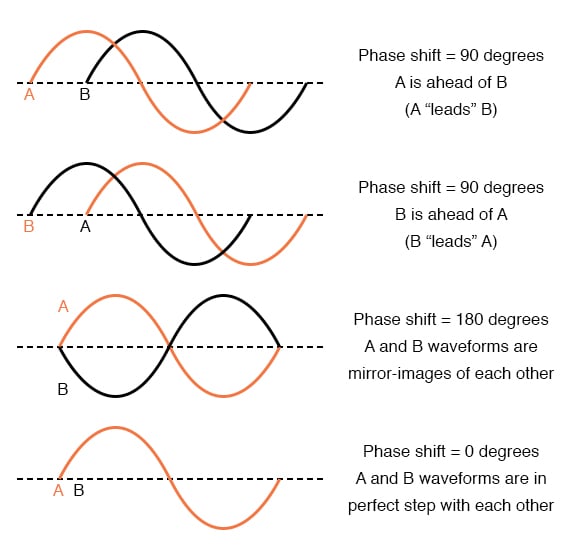Great Info About What Does Current Phase Mean

In Phase
Decoding "Current Phase"
1. Understanding the Basic Idea
Ever heard someone say, "We're in a new phase of the project," or perhaps, "This is just a phase"? It's a pretty common expression, right? But what does "current phase" really mean? At its heart, it refers to a specific, identifiable period within a larger process, project, or even life event. Think of it as a chapter in a book — each chapter has its own focus, challenges, and goals. The "current phase" is simply the chapter you're in right now.
It's important to understand that phases aren't arbitrary. They're usually defined by specific milestones, objectives, or changes in direction. In a construction project, you might have a "foundation phase," a "framing phase," and a "finishing phase." Each of these requires different skills, materials, and timelines. Recognizing the current phase helps everyone involved stay aligned and focused on what needs to be done now.
Consider a software development lifecycle. You've got the "planning phase," then the "design phase," the "coding phase," the "testing phase," and finally, the "deployment phase." Jumping straight from planning to deployment without going through the others would be, well, chaotic, to say the least! The "current phase" acts as a roadmap, guiding progress and ensuring everything is done in the right order.
So, the next time you hear "current phase," don't just nod along blankly. Think of it as a signpost, indicating where you are on a journey. It highlights what tasks are most relevant, what resources are needed, and what goals you're currently striving to achieve. It's all about staying present and focused on the now within the bigger picture.

What Is Phase In Electricity? Are Single And Three
Why Knowing the "Current Phase" Matters (And Why You Should Care)
2. Staying on Track and Avoiding Disaster
Imagine trying to bake a cake without following the recipe in order. You might throw all the ingredients into the oven at once and hope for the best. Spoiler alert: it probably won't turn out very well. Understanding the "current phase" in any endeavor is like following a recipe. It helps you avoid common pitfalls, allocate resources effectively, and ultimately, achieve your desired outcome.
In a business context, knowing the current phase of a product launch, for instance, can make all the difference. Are you in the "market research phase," where you're gathering data and identifying your target audience? Or are you in the "promotion phase," where you're actively advertising and trying to generate buzz? Each phase requires a different set of strategies and tactics. Misunderstanding the current phase can lead to wasted resources and missed opportunities.
It's not just about avoiding mistakes; it's also about maximizing efficiency. When everyone on a team understands the "current phase," they can prioritize their efforts and collaborate more effectively. They know what tasks are most critical, what deadlines are looming, and how their individual contributions fit into the overall plan. This clarity of purpose can boost morale and productivity significantly.
Furthermore, recognizing the "current phase" allows for better risk management. By understanding where you are in a process, you can anticipate potential challenges and develop contingency plans. Are you entering a phase that's known to be particularly complex or demanding? Knowing this in advance allows you to prepare accordingly and mitigate potential risks before they derail your progress. It's like having a weather forecast for your project — it helps you navigate potential storms.

"Current Phase" in Different Contexts
3. It's Everywhere, Really!
The beauty of the "current phase" concept is its versatility. It's not just limited to business projects or scientific endeavors; it applies to virtually any process that unfolds over time. Think about your personal life. You might be in a "learning phase" in your career, where you're focused on acquiring new skills and knowledge. Or perhaps you're in a "relationship phase," where you're building deeper connections with loved ones. Even life itself can be viewed as a series of phases — childhood, adolescence, adulthood, and so on.
In the world of finance, "current phase" is relevant to economic cycles. Economies go through phases of expansion, peak, contraction (recession), and trough. Investors often adjust their strategies based on which phase the economy is currently in. For example, during a recession, they might focus on defensive stocks that are less sensitive to economic downturns. Understanding the economic "current phase" helps them make more informed decisions.
Even in nature, you can see the "current phase" at play. A plant goes through phases of germination, growth, flowering, and seed production. Each phase is characterized by specific changes in its physical structure and physiological processes. Similarly, the moon goes through its lunar phases — new moon, crescent moon, first quarter, full moon, and so on. These phases are determined by the relative positions of the sun, earth, and moon.
So, whether you're managing a complex project, navigating your career, or simply observing the world around you, the "current phase" concept can provide valuable insights. It helps you understand where you are, where you're going, and what you need to do to get there. It's a framework for making sense of change and progress, no matter the context.

Three Phase Electricity Basics And Calculations Electrical Engineering
How to Identify and Define "Current Phase" Effectively
4. Setting the Stage for Success
Okay, so you get what "current phase" means. But how do you actually identify it in a practical setting? It's not always obvious, especially in complex situations. The key is to break down the overall process into smaller, manageable stages, each with clearly defined objectives and milestones. Think of it like creating a roadmap for your journey — each stop along the way represents a distinct phase.
Start by identifying the starting and ending points of the overall process. What's the ultimate goal you're trying to achieve? Once you know the destination, you can work backward to define the individual phases needed to get there. What are the key steps or activities that must be completed along the way? These steps can serve as natural boundaries between phases.
Another helpful approach is to look for significant changes or transitions. Are there points in the process where the focus shifts, the resources needed change, or the level of complexity increases? These transitions often indicate the start of a new phase. For example, in a marketing campaign, you might have a phase focused on building awareness, followed by a phase focused on generating leads, and finally a phase focused on closing sales. Each of these phases requires a different set of strategies and tactics.
Don't be afraid to be flexible and adjust your phase definitions as needed. Sometimes, unexpected events or unforeseen challenges can require you to re-evaluate your plan. The important thing is to maintain a clear understanding of where you are in the process and what needs to be done next. Remember, the "current phase" is not a rigid, unchangeable concept; it's a dynamic tool for managing progress and achieving your goals. Think of it as a living document that evolves as you learn and adapt.

Avoiding Common Pitfalls When Thinking About "Current Phase"
5. Steering Clear of Trouble
While understanding the "current phase" can be incredibly helpful, it's also important to be aware of some potential pitfalls. One common mistake is becoming too fixated on the current phase and losing sight of the overall goal. It's easy to get bogged down in the details and forget why you're doing what you're doing. Always keep the big picture in mind, and periodically zoom out to assess your progress and ensure you're still on track.
Another pitfall is assuming that all phases are created equal. Some phases may be more challenging, complex, or time-consuming than others. It's important to allocate resources accordingly and avoid underestimating the effort required for certain phases. Failing to do so can lead to delays, cost overruns, and ultimately, project failure. It's like preparing for a marathon — some miles will be easier than others, and you need to pace yourself accordingly.
A third pitfall is failing to communicate the "current phase" effectively to all stakeholders. If team members are not aligned on where they are in the process, it can lead to confusion, miscommunication, and duplicated efforts. Make sure everyone understands the objectives, milestones, and timelines associated with the current phase. Use clear and concise language, and provide regular updates to keep everyone informed.
Finally, avoid being overly rigid in your definition of phases. Sometimes, the boundaries between phases can be blurry, and it's not always clear exactly when one phase ends and another begins. Be prepared to adjust your approach as needed, and don't be afraid to deviate from the plan if circumstances warrant it. The goal is to use the "current phase" concept as a guide, not as a straitjacket. After all, flexibility is key to success in any endeavor.

Phase Diagrams 6iii Materials Science And Technology Volume
FAQ
6. Your Burning Questions Answered
We've covered a lot, but you might still have some questions swirling around. Let's tackle some of the most common ones!
Q: Is "current phase" the same as "status"?A: Not quite! "Status" is more of a snapshot in time — a quick update on where things stand. "Current phase" provides more context, explaining the overall stage of the process you're in. Think of it this way: status tells you where you are, while current phase tells you why you're there and what's next.
Q: Can a project have multiple "current phases" simultaneously?A: Technically, no. The idea is that you're primarily focused on one distinct stage at a time. However, some activities from a previous or future phase might overlap slightly. For instance, you might be wrapping up the "testing phase" while simultaneously starting some preliminary work on the "deployment phase." But ideally, there's a primary phase that's driving the majority of the effort.
Q: What's the best way to visually represent the "current phase"?A: Lots of options! Gantt charts are great for project management, showing timelines and dependencies. Kanban boards can also be useful for tracking tasks within a specific phase. Even a simple flowchart can help visualize the different stages of a process. Choose the method that best suits your needs and the complexity of the project.
Q: What happens if we skipped phases?A: It depends on the project and skipped phases. If skipped planning phase it will be a disaster, if just skipping testing phase, you will encounter many bug after launch.